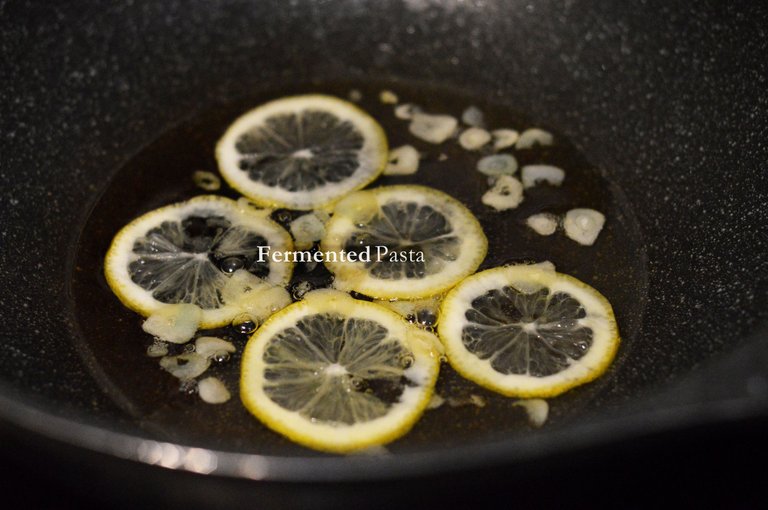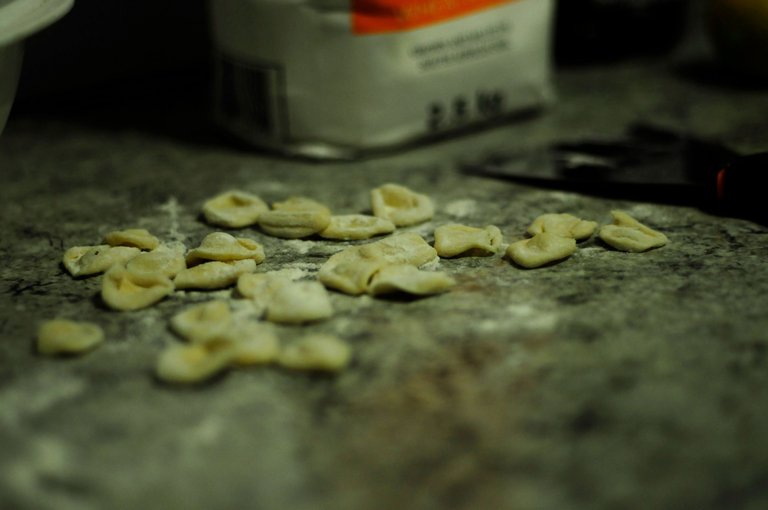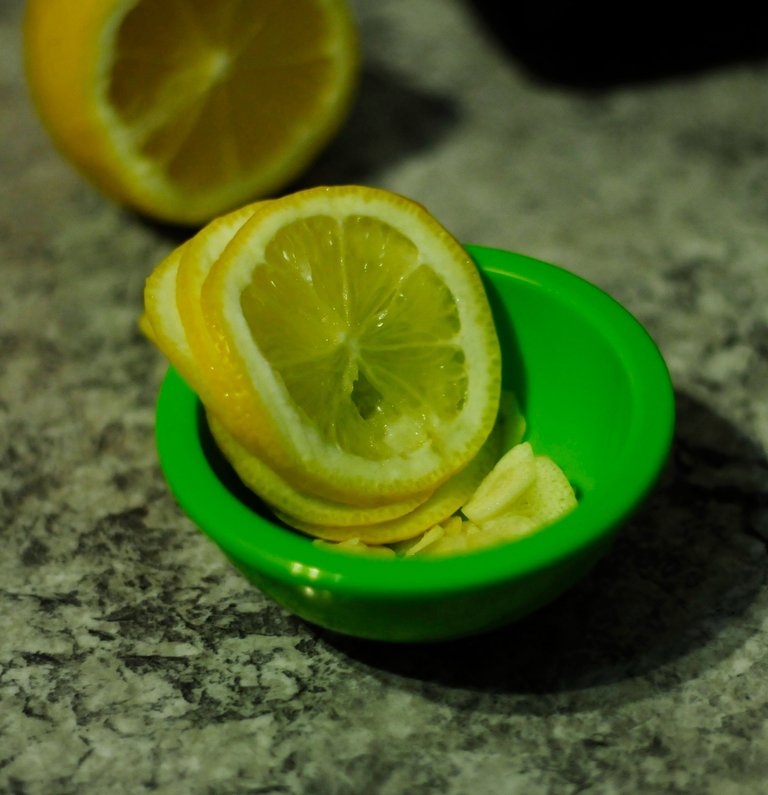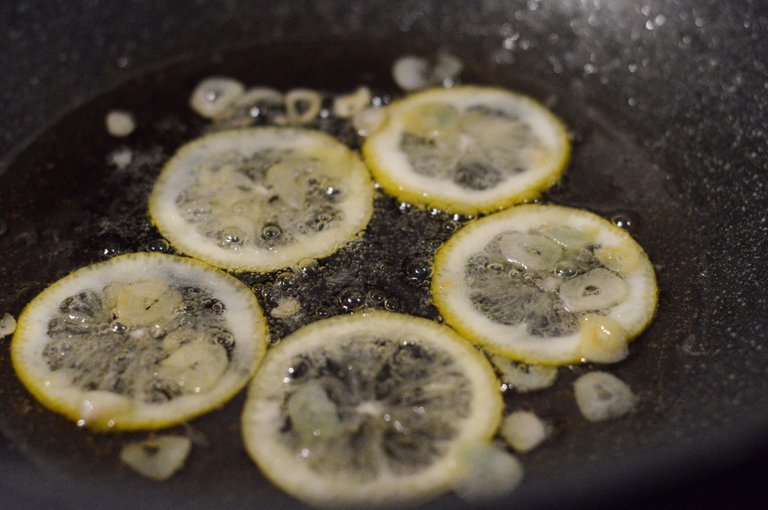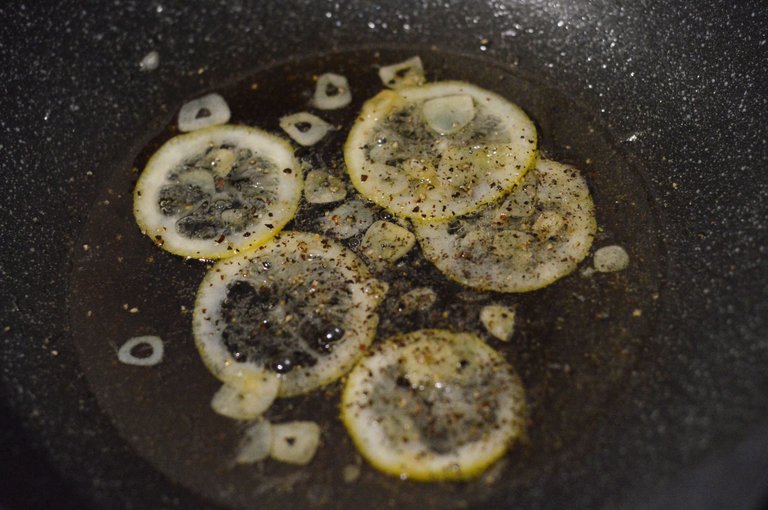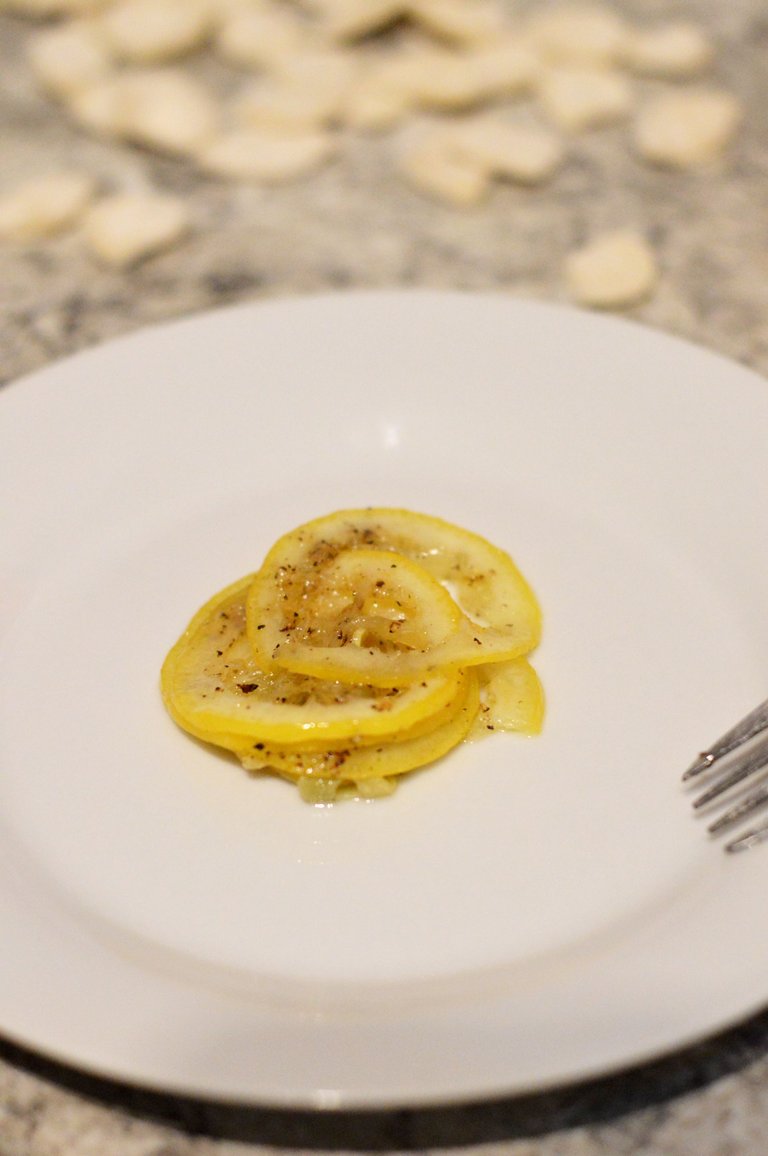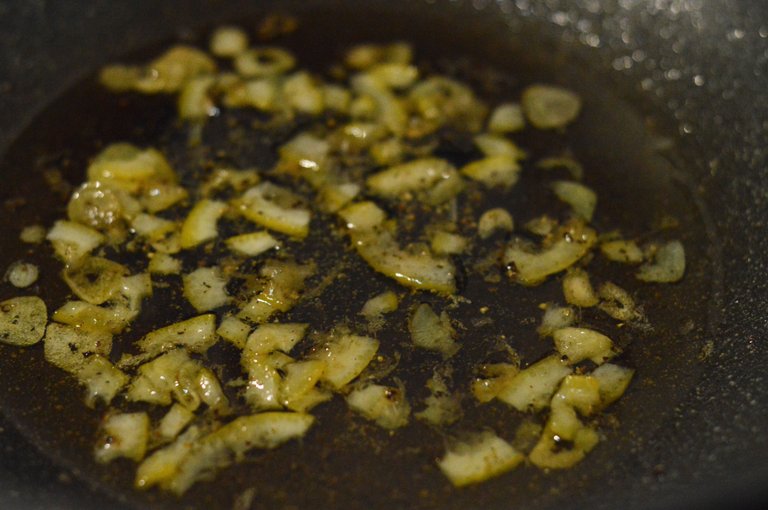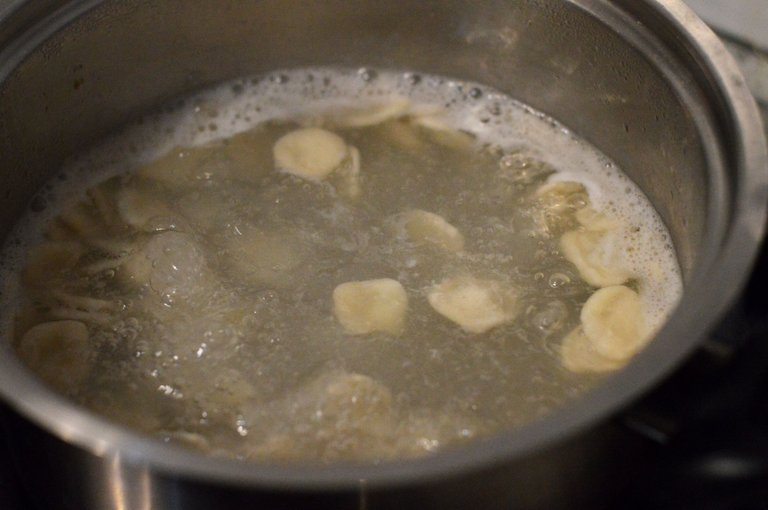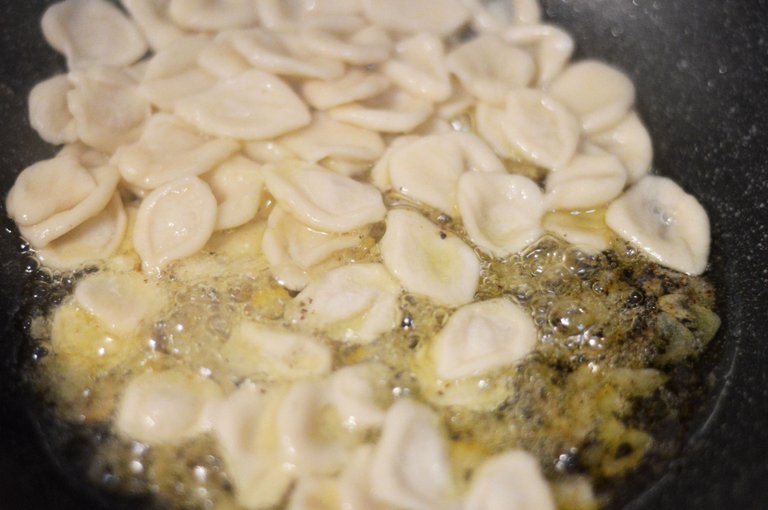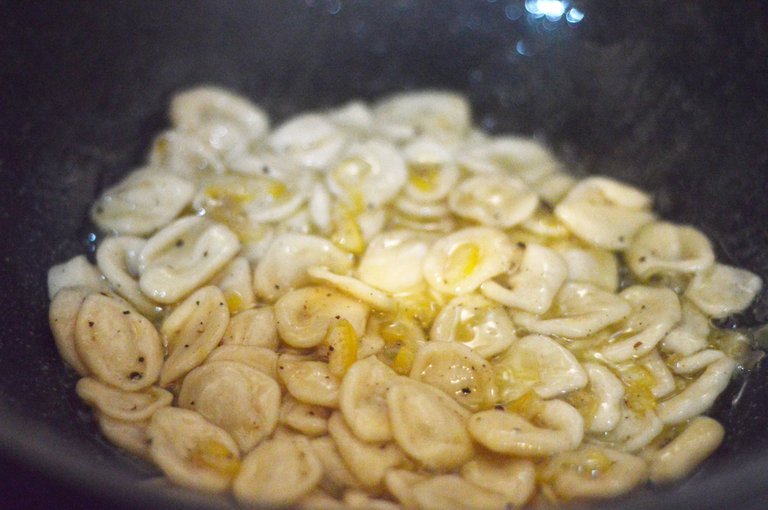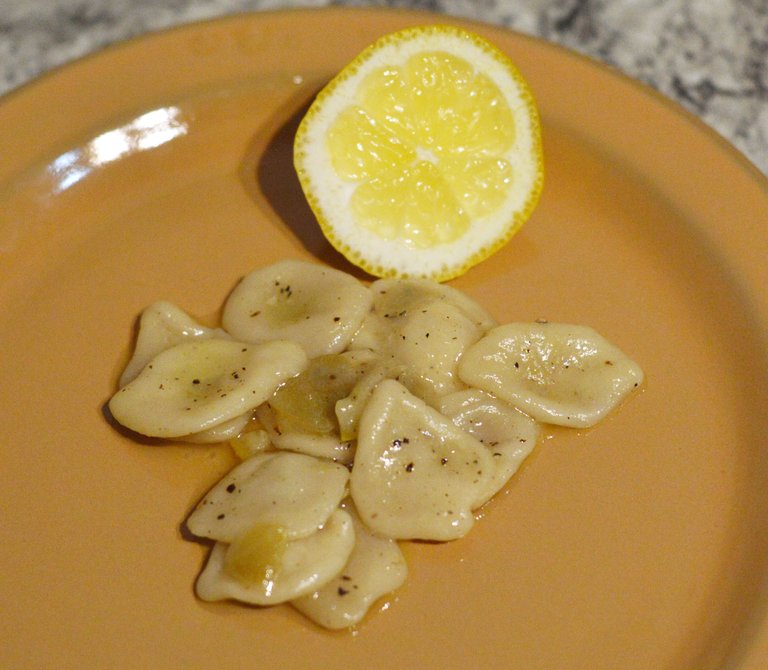I am going to go out on a limb and say that most of the best pasta dishes begin with homemade pasta. This is not always the case; think about those perfectly creamy carbonara pasta dishes. It requires dried-out pasta which you can cook to perfect al dente. But most experimental pasta dishes, in my opinion, start with homemade pasta. The extra flour in the cooking water helps with creating the perfect velvety smooth sauce. The extra time spent making the pasta by kneading it, helps you think about the dish you are about to make. There is also just something therapeutic about the whole process.
Recently I bought some lemons and I had the craving to make something like pasta aglio e olio. If you are not familiar with it, it is basically pasta, olive oil, pasta cooking water, and garlic. It cannot get simpler. But being so simple, it is easy to make a mess of it.
In this recipe, I combined garlic and thinly sliced lemons, slow-cooked in some olive oil. I made some homemade pasta in orecchiette (small ear) pasta. This is the second day in a row that I made this pasta for my girlfriend.
In this recipe and method, I show you how I make this very simple dish, but one that requires some technique. With enough practice and patience, this will become a go-to recipe! So please follow along as I show you how I make this dish.
Recipe/Ingredients
As this is a very simple dish, there are only four core ingredients, which makes two small portions:
- 100g pasta,
- 1 garlic clove,
- 50ml olive oil,
- 5 thin slices of lemon,
- pinch of pepper, and
- 20-50ml of salted pasta water.
| Again, I use this little fancy app to tell me how many calories the dish is. I am not 100% sure about how accurate the information is, so take the information with a grain of salt. That said, it is really helpful to see how many calories a dish has if you want to take your health into your own hands. Here is the source for this image, and if you want to turn your recipe into a nutritional table. | 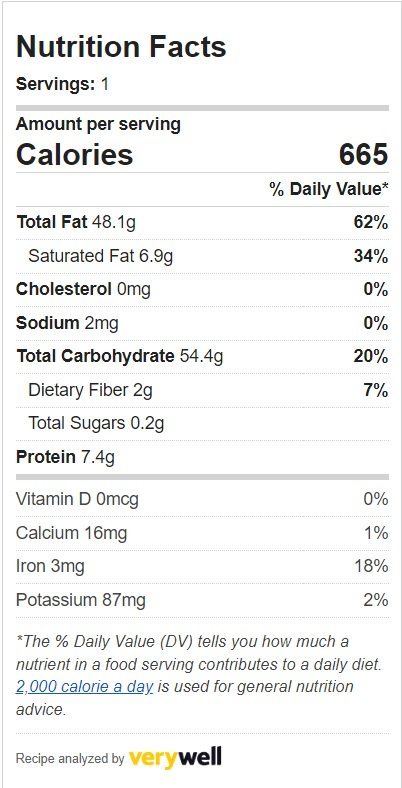 |
Method/Process
If you know how to make Italian pasta dishes without the use of cream or anything of the kind, that is, if you only use oil, pasta water and cheese, you will master any pasta dish and sauce. Aglio e olio is the toughest recipe out there to make because you emulsify oil and water with only the pasta starch. But this is easy with enough practice!
The first step in this dish/recipe is to cook the garlic and the lemon very slowly. I started with the garlic.
I cooked the garlic on very low heat. The key is not to brown the garlic as this will result in a burnt and bitter flavor. I did the same with the lemon. On very low heat, I cooked the lemon slices until they were soft. There is almost no bitter flavour.
And lastly, I added some freshly ground pepper just before the lemon was done. This will also burn easily so the key is to go very low.
When the lemon was super soft and most of the oil had a lemony-garlic flavour, I took out the lemon pieces and cut them into small pieces.
When all of this is done, I begin to cook the pasta. Homemade pasta cooks very quickly. It takes about 2-3 minutes until they are perfect. As I finished the pasta in the sauce, I slightly undercooked them as well.
When they float to the top, or when two minutes are done, I add the pasta to the hot oil with some pasta water. Depending on how much oil you use and how starchy your pasta water is, you will need to judge how much pasta water you will need to use.
The key is to vigorously mix the pasta, the oil, and the pasta water. This will create that velvety smooth sauce.
If everything goes according to plan, and you do not use too much oil, the sauce will beautifully emulsify into a smooth velvety sauce. The key thing about this dish and most other sauces that are made with pasta water is to not add salt to the other ingredients. Salt is added by adding the pasta water.
The garlic and lemon combination is perfect. The fresh lemon flavour cuts through the oil. The whole dish just works so well. The pepper adds just a hint of heat and lemon and pepper perfectly combine as well.
Making your own past feels liberating, almost like a type of resistance. Making these strange combinations is what experimentation and cooking are all about.
I really hope that you will make this for yourself! Please share in the comments how it went and if you have made anything similar.
Happy cooking, and keep well.
The photographs used in the post are my own, taken with my Nikon D300 and D3200. The recipe is something I have been thinking about, maybe there is something similar out there. The writing in this recipe is my own.
